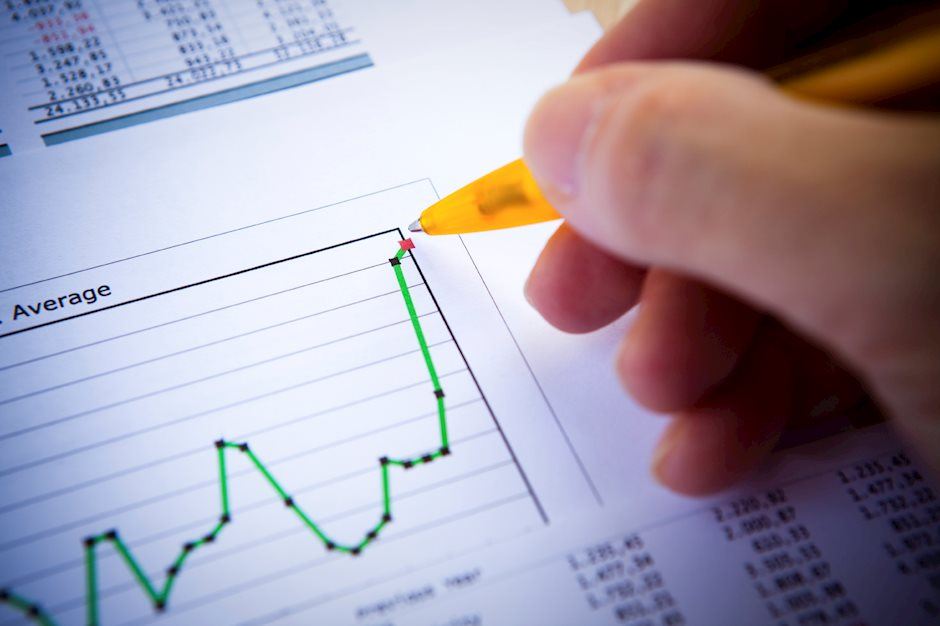Earnings take center stage as the Trump trade reignites

Monday’s market action had all the hallmarks of a mixed bag, with the Dow Jones Industrial Average and S&P 500 retreating, while the Nasdaq bucked the trend, climbing higher as Nvidia hit a new all-time high. But let’s not get too carried away by Nvidia’s surge—it masked a subtle bearish intraday undertone as the S&P 500 and Dow slipped from their lofty highs, with traders bracing for a pivotal week of earnings reports.
Meanwhile, benchmark 10-year Treasury yields soared to a 12-week high as investors priced in a more robust U.S. economy and a less dovish Fed. And just when you thought things couldn't get any spicier, the so-called "Trump trade" is back in action, setting the stage for a potentially wild week in the currency markets. The financial FX world is jumpy ahead of the IMF meetings in Washington, where prominent G10 central bankers will have their say. In the BRICS summit in Russia and bubbling tensions in the Middle East, you’ve got a geopolitical cocktail that’s bound to shake things up.
But the real showstopper? The U.S. election is now less than two weeks away. Trump’s rising odds in the betting markets have lit a fire under the dollar as investors scramble to position themselves for what could be a game-changing event. Wall Street is buzzing with the return of the "Trump trade," a throwback to his first term when deregulation and protectionist policies sent specific sectors soaring. Billions are pouring into banks, cryptocurrencies, and energy stocks, all in anticipation of Trump’s potential comeback to the White House.
With neither presidential candidate showing any inclination toward fiscal restraint, concerns about swelling budget deficits amid an economy already growing at a brisk pace are heightening investor anxiety. The prospect of ballooning debt during such robust growth raises questions about sustainability and inflationary pressures, further fueling market unease as the U.S. faces critical policy decisions post-election. Investors are left to grapple with the uncertainty, as fiscal discipline takes a back seat in the lead-up to the White House showdown.
Hence, Treasury yields are climbing as investors brace for higher inflation and a glut of longer-dated government bonds. Meanwhile, the dollar is strengthening against its peers, as traders bet that a Trump win would supercharge inflation and drive down bond prices, while his tariffs would weaken foreign markets more than the US, all but greenlighting the US dollar higher.
Asian markets on Tuesday are eyeing a rebound after Monday’s tepid start to the week. Japanese equities are primed for a potential upswing as the yen tumbled to its lowest level in nearly three months. Tokyo markets, in particular, looks ready to shift into a higher gear, as the inverse correlation between the yen and Japanese stocks has deepened over the past month—when the yen weakens, stocks tend to rally, and vice versa. With the yen under pressure, this trend could boost Tokyo markets.
Beyond Japan, however, it might be a tougher road for broader Asian markets as we enter the two-week run-up to the U.S. election. Tariff concerns and the growing "Trump trade" narrative dominate headlines, leaving little room for optimism elsewhere. The dollar surged nearly 1% to 150.90 yen, its highest level since August 1, marking a key moment in the greenback’s rise to a three-month high against a basket of major currencies. This dollar strength—fueled by geopolitical risks and a recalibration of Fed rate cut expectations—could continue to support Japanese equities, given the yen’s weakness.
The yen has been struggling since the LDP leadership shake-up, with USD/JPY climbing back to the 150.00 level, up from 145.00 pre-election. New Prime Minister Ishiba’s cautious stance on BoJ rate hikes has further pressured the yen, compounded by the central bank’s signals that there’s no urgency to tighten policy.
Looking ahead, while Japan’s political turbulence may keep the yen soft, the real wildcard is the U.S. election. A Trump win could send U.S. yields soaring, pushing USD/JPY into the mid-150s before the year is out. FX markets are already positioning for such an outcome, with demand for the dollar rising across the board. Traders are bracing for volatility, and with Trump’s odds climbing in the betting polls, the stakes have never been higher. If the greenback continues to gain ground, we could see some fireworks in the weeks ahead.
There was more "string-pushing" in China on Monday, with yet another rate cut that seems more symbolic than impactful. If you've long since given up trying to figure out which rate is actually "key" in China, don't worry—most analysts you quoted yesterday can't tell you either. Call them up, and they’ll likely stumble through the same confusion.
The seven-day reverse repo rate is the critical benchmark rate that traders key on. It is now at 1.5%, following a 20bps cut last month courtesy of Pan Gongsheng’s rate-cut blitz. Before that, the go-to rate was the one-year MLF rate, which got a 30bps trim in late September. That rate used to be the anchor for how banks priced loans to their top-tier clients. The one-year loan prime rate (LPR) comes into play here, with its longer five-year sibling tied to mortgages.
But here's the rub: None matters much if there's no appetite for credit. The People’s Bank of China and lenders can slash rates all they want, but it will not shift the dial until consumer sentiment turns around. Right now, cutting rates is like offering a sale on something no one’s buying—until demand picks up, these moves are mostly noise.
Author

Stephen Innes
SPI Asset Management
With more than 25 years of experience, Stephen has a deep-seated knowledge of G10 and Asian currency markets as well as precious metal and oil markets.

















